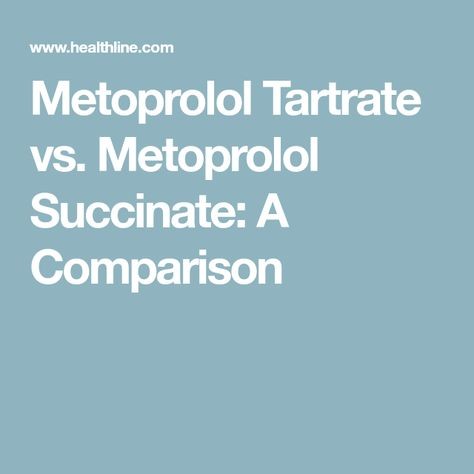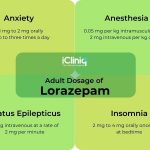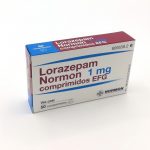
Contents
Metoprolol vs. losartan
Metoprolol is a beta-blocker that blocks the action of the sympathetic nervous system. It is used to treat high blood pressure, heart pain, congestive heart failure, hyperthyroidism, abnormal heart rhythms, some neurologic conditions, and to prevent migraine headaches.
Losartan, on the other hand, is an angiotensin receptor blocker (ARB) used to treat high blood pressure, reducing the risk of stroke, and left ventricular hypertrophy. It is also used to treat people with type 2 diabetes and hypertensive patients with diabetic nephropathy. Losartan works by blocking the angiotensin receptor, relaxing muscle cells and dilating blood vessels, thereby reducing blood pressure.
Side effects of metoprolol and losartan
Metoprolol
Metoprolol has side effects such as abdominal cramps, diarrhea, constipation, fatigue, insomnia, indigestion, nausea, depression, dreaming, memory loss, fever, impotence, lightheadedness, low blood pressure, decreased exercise tolerance, increased triglycerides, bronchospasm, cold extremities, sore throat, and shortness of breath or wheezing. Some possible serious adverse effects include slow heart rate, Raynaud’s phenomenon, hepatitis, and increased insulin resistance. Metoprolol can also aggravate breathing difficulties in patients with asthma, chronic bronchitis, or emphysema.
WARNING: Metoprolol can cause dangerously slow heart rates and worsen symptoms of heart failure in patients with existing slow heart rates and heart blocks. It can also increase the risks of general anesthesia and surgery in patients undergoing non-cardiac surgery if high-dose extended-release metoprolol is initiated.
Losartan
Losartan may cause a persistent cough, an increase in serum potassium, and impotence. It may also reduce kidney function in some patients and should not be used by patients with bilateral renal artery stenosis. Rare cases of rhabdomyolysis have been reported.
Dosage of metoprolol vs. losartan
Metoprolol
- Metoprolol should be taken before meals or at bedtime.
- The dosage for treating hypertension is 100 to 450 mg daily in single or divided doses.
- The dosage for treating angina is 100 to 400 mg daily in two divided doses.
- The dosage for treating heart attack is three 5 mg injections administered 2 minutes apart followed by treatment with 50 mg oral metoprolol every 6 hours for 48 hours. After 48 hours, patients should receive 100 mg orally twice daily for at least 3 months.
- The dosage for treating congestive heart failure is initially 25 mg daily, which is then increased every 2 weeks to reach a target dose of 200 mg daily orally.
- The dosage for treating hyperthyroidism is 25 to 30 mg by mouth every 6 hours.
Losartan
- The starting dosage of losartan for adults is 25 to 50 mg daily.
- The maximum dosage is 100 mg daily. The total daily dosage of losartan may be divided and administered twice daily.
- The starting dosage of losartan for pediatric patients 6 years of age or older is 0.7 mg/kg up to 50 mg once daily. Dosages more than 1.4 mg/kg or 100 mg daily have not been evaluated in pediatric patients.
- Losartan may be given with or without food.
Drug interactions with metoprolol and losartan
Metoprolol
- Calcium channel blockers and digoxin can lower blood pressure and heart rate when administered together with metoprolol.
- Metoprolol can mask the early warning symptoms of low blood sugar and should be used with caution in patients receiving treatment for diabetes.
- Fluoxetine can increase blood levels of metoprolol and increase the side effects from metoprolol.
Losartan
Losartan may increase levels of blood potassium, which can lead to serious heart problems. Therefore, concomitant use of other drugs or substances that increase blood potassium should be avoided. Combining losartan or other ARBs with nonsteroidal anti-inflammatory drugs (NSAIDs) in certain patients may result in reduced kidney function. The antihypertensive effect of losartan may be reduced by aspirin and other NSAIDs. Combining ARBs, ACE inhibitors, or aliskiren increases the risk of low blood pressure, hyperkalemia, and reduced kidney function without additional benefits.
Aliskiren and losartan should not be combined in patients with diabetes or renal impairment. Increases in blood lithium levels and lithium toxicity have occurred when lithium and ARBs or hydrochlorothiazide were combined. Blood lithium levels should be monitored.
Are metoprolol and losartan safe to use while pregnant or breastfeeding?
Metoprolol
Safe use of metoprolol during pregnancy has not been established. Small quantities of metoprolol are excreted in breast milk and may potentially cause adverse effects in the infant.
Losartan
ARBs, including losartan, can cause injury and even death to the fetus when used in the second or third trimester of pregnancy. Losartan should not be used during pregnancy. It is not known whether losartan is excreted in breast milk, but due to the possibility of harm to the nursing infant, losartan should be discontinued by females who are nursing.
Summary
Metoprolol and losartan are both used to treat high blood pressure, but they work in different ways. Metoprolol is a beta-blocker, used for various heart conditions and migraine prevention, while losartan is an angiotensin receptor blocker, used for heart conditions and the treatment of high blood pressure in patients with type 2 diabetes and kidney disease.


